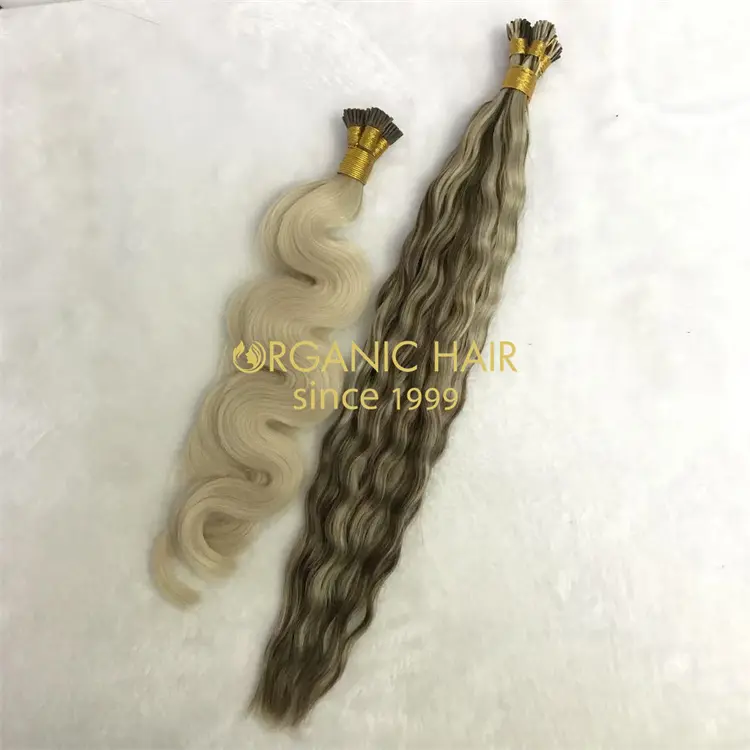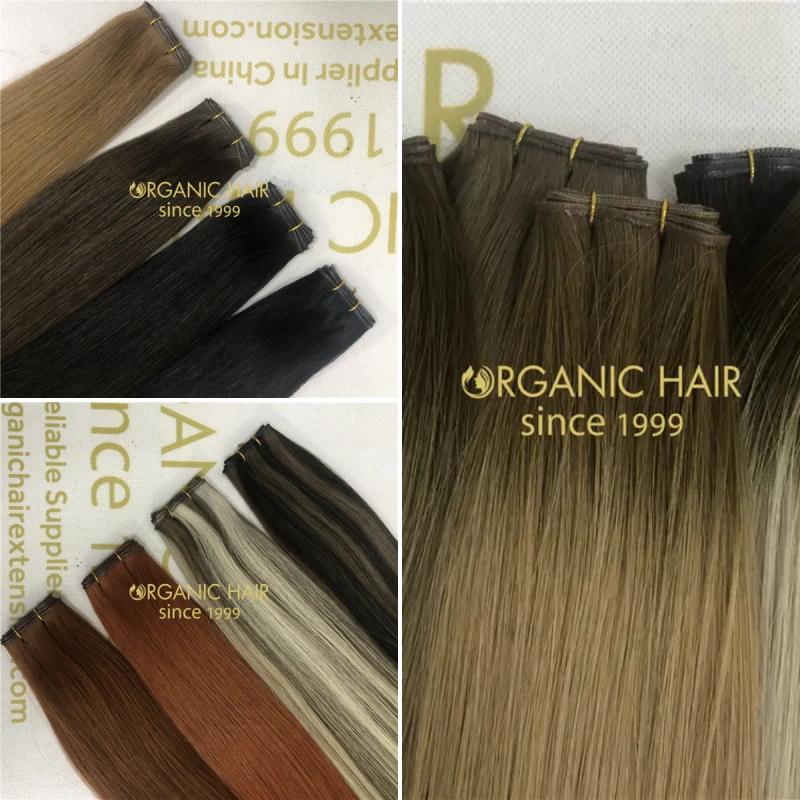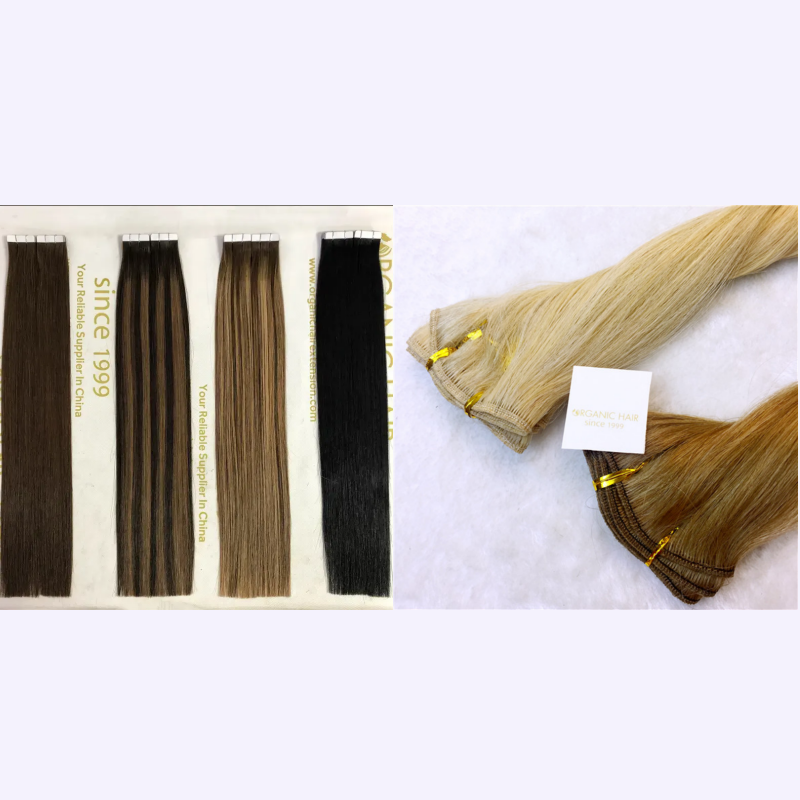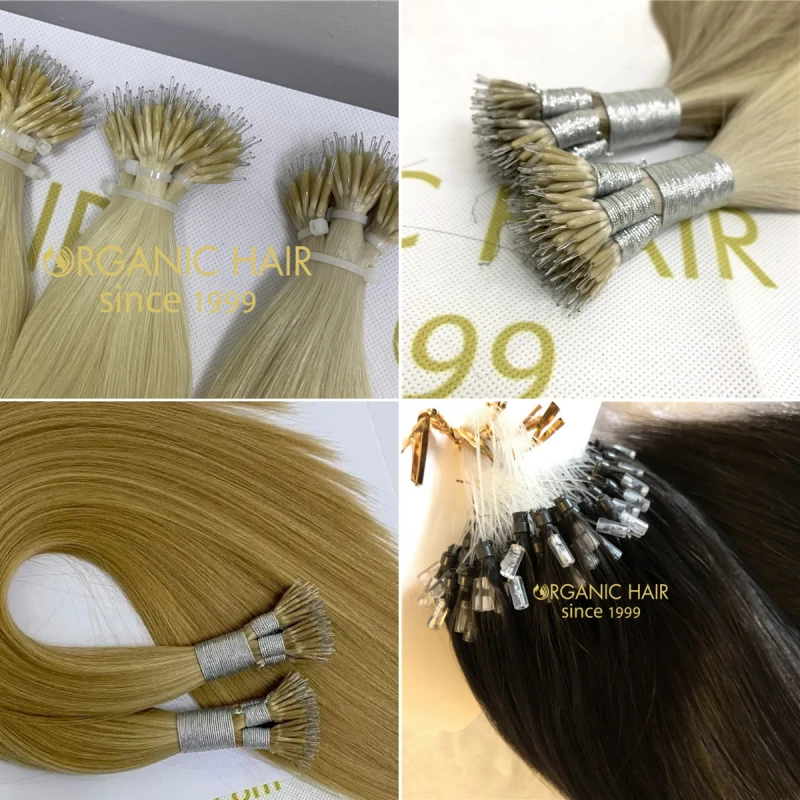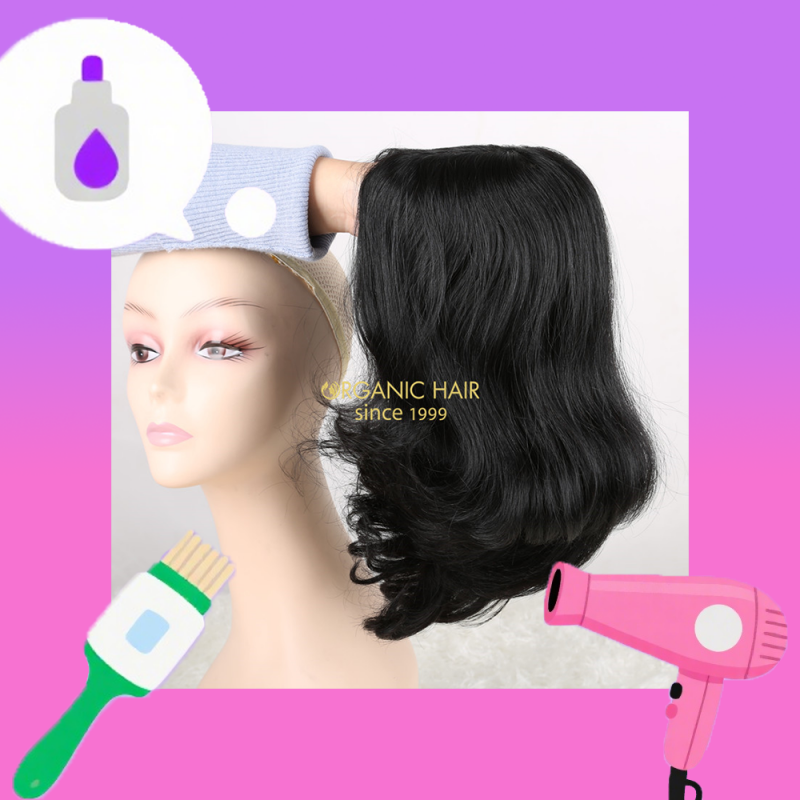Choosing the right hair type isn’t just about texture or appearance—it’s about delivering a personalized, high-quality experience to every client. As stylists, understanding the origins and unique characteristics of different human hair types allows us to recommend the best options based on lifestyle, styling goals, and maintenance preferences.
Two of the most sought-after hair types in professional salons today are Indian hair and Malaysian hair. Known for their premium quality and versatility, both offer exceptional results—but in very different ways. Indian hair is appreciated for its natural, slightly wavy texture and light, soft feel, making it highly adaptable for styling. On the other hand, Malaysian hair is admired for its silky smooth finish, medium-to-high density, and lustrous shine that holds its sleekness even in humid conditions.
This guide is crafted specifically for stylists, salon owners, and hair educators who want to confidently navigate the differences between these two hair types. Whether you're sourcing extensions, helping a client choose the right texture, or training your team, having a clear understanding of Indian vs Malaysian hair will elevate your professional service.
By the end of this guide, you'll know how to identify key traits, understand ideal client matches, and make styling decisions that lead to long-lasting, beautiful results.
Overview of Indian Hair
Indian hair has long been considered one of the most versatile and widely used types of human hair in the beauty industry. Its popularity is rooted not only in its quality and styling potential, but also in its ethical sourcing and naturally beautiful texture.
Origin and Sourcing
The majority of Indian hair used in wigs, extensions, and weaves is collected through religious offerings at Hindu temples—most notably the Tirupati temple—where people voluntarily shave their heads in acts of devotion. This hair is then ethically collected, cleaned, and sorted before being sold. The most desirable version is known as virgin remy hair, which means the hair has never been chemically treated and the cuticles are kept intact and aligned in one direction. This ensures minimal tangling and a longer lifespan, making it an excellent choice for repeated use and restyling.
Texture and Natural Wave Pattern
One of the defining characteristics of Indian hair is its natural wave. It typically ranges from straight to lightly wavy and occasionally curly, giving it a realistic, effortless texture that blends beautifully with many hair types, especially those of African, Afro-Caribbean, and South Asian descent. Its medium thickness and soft feel make it ideal for both volume and movement without feeling heavy.
Color Range and Adaptability
Indian hair usually comes in shades of natural black to dark brown, but it responds exceptionally well to color treatments. Because it’s virgin hair, it can be safely dyed or bleached with minimal damage when treated properly. This adaptability makes it perfect for clients looking for custom colors, highlights, or ombré styles. Whether you’re lifting to a honey blonde or adding subtle lowlights, Indian hair takes and holds color beautifully.
Behavior When Styled
Indian hair is known for its styling flexibility. It holds curls well with heat styling, responds nicely to straightening, and reverts naturally to its wave pattern after washing. It can withstand frequent styling with proper care, which makes it a favorite for clients who like to switch between straight, curly, and wavy looks. Because the strands are not overly thick, styles tend to have a soft, flowing appearance rather than a dense or bulky one.
Ideal Client Types
Indian hair is a strong match for clients who want a natural look with lots of movement, or those who enjoy versatility in their hairstyles. It’s especially great for:
Clients who want extensions that blend seamlessly with textured or lightly wavy hair
Those who regularly curl, flat iron, or color their hair
People seeking high-quality hair at a balanced price point
First-time extension wearers looking for a lightweight, easy-to-maintain option
Indian hair delivers an excellent balance of softness, movement, and adaptability, making it one of the most reliable and client-friendly hair types available to stylists. When ethically sourced and properly maintained, it provides long-lasting beauty with endless styling options.
Overview of Malaysian Hair
Malaysian hair is another highly coveted hair type in the beauty industry, known for its unique characteristics that provide a luxurious, smooth finish. This hair is particularly prized for its durability, silky texture, and ability to maintain a sleek, polished appearance over time.
Origin and Sourcing
Malaysian hair is sourced primarily from Malaysia, where it is harvested from both donors and local populations. Like Indian hair, Malaysian hair is usually virgin and remy, ensuring the cuticles remain intact and aligned, which reduces tangling and increases the longevity of the hair. Due to the humid climate in Malaysia, the hair tends to have a natural, smooth texture with a slightly thicker strand, making it a preferred choice for those who want a luxurious look with more density and body.
Texture and Natural Wave Pattern
Malaysian hair is smooth, silky, and often straight with a soft wave. While the hair tends to be straighter than Indian hair, it can still hold natural waves depending on the bundle's origin. This hair type offers a denser, more voluminous appearance, which makes it an excellent option for clients seeking a thick, full-bodied style. Its fine texture, coupled with medium-to-high density, gives it a beautiful shine that naturally appears healthy and well-maintained.
Color Range and Adaptability
Malaysian hair typically comes in dark brown to black shades, but it also takes to color treatments very well. While not as versatile as Indian hair in terms of lightening to blonde tones, it can still be dyed with good results. Its slightly thicker texture means that it holds color well and offers vibrant, rich hues for those seeking darker shades, highlights, or lowlights. However, since the strands are generally thicker, it may require more careful processing when lightening.
Behavior When Styled
One of the standout features of Malaysian hair is its resistance to humidity and frizz. Clients who live in tropical or humid climates often prefer this hair type because it retains its sleek, smooth look even in moisture-rich environments. This hair type is also very easy to straighten and holds a sleek, glossy finish for extended periods. While it holds curls well, the texture tends to be less prone to reversion after washing, unlike Indian hair, which reverts more easily to its natural wave pattern. As a result, Malaysian hair is perfect for clients who prefer a long-lasting sleek and straight look.
Ideal Client Types
Malaysian hair is best suited for clients who want a luxurious, high-shine look with added volume. It is particularly favored by:
Clients who desire smooth, glossy straight hair that resists frizz and humidity
Those seeking high-density extensions for fuller, thicker styles
People who need low-maintenance, easy-to-manage hair
Clients who prefer a more polished, sleek finish and enjoy straight hair with minimal effort
Ideal for clients living in humid areas or those who need long-lasting, frizz-free styles
Malaysian hair’s ability to maintain its sleek, glossy finish and its natural resistance to frizz make it an excellent option for clients looking for a polished, luxurious look with minimal upkeep. With proper care, this hair can offer a stunning, long-lasting style that complements various types of high-fashion looks.
Head-to-Head Comparison Table
Both Indian hair and Malaysian hair are premium choices, and each brings distinct advantages to the table. Indian hair is more versatile, adaptable, and natural in its appearance, perfect for clients who want a light, effortless look with lots of styling options. Malaysian hair, on the other hand, offers a thicker, silkier finish, ideal for clients seeking volume and sleekness that lasts throughout the day, even in challenging climates.
As a stylist, knowing when to recommend each type of hair will allow you to better serve your clients' specific needs and preferences, ensuring the best results for every client. Here is a head-to-head comparison table of them.
| Feature | Indian Hair | Malaysian Hair |
|---|---|---|
| Texture | Soft, slightly wavy, with natural movement | Smooth, silky straight, with a fine texture |
| Density | Medium | Medium-high |
| Shine | Natural matte, with subtle shine | Glossy, with a high shine and polished finish |
| Styling Flexibility | High, adapts well to curls, waves, and straight styles | High, particularly great for sleek, straight looks and curls |
| Frizz Resistance | Moderate, may require anti-frizz products | High, resistant to humidity and frizz |
| Maintenance Level | Medium, requires some care to maintain wave pattern | Low, easy to manage and maintain |
| Best for Clients... | Seeking natural, light styles with movement | Wanting sleek, easy-to-manage looks with a polished finish |
| Color Adaptability | High, can be dyed, bleached, and styled easily | Moderate, best for darker tones or subtle color changes |
| Longevity | Medium to long-lasting with proper care | Long-lasting with minimal maintenance |
| Ideal Styling | Casual to voluminous styles, layered looks | Sleek, straight styles, glossy finishes |
| Best Climate | Ideal for temperate climates, works well with heat styling | Perfect for humid climates due to its frizz resistance |
Key Takeaways:
Indian Hair is best suited for clients who desire natural-looking, light, voluminous styles. It's an excellent choice for those who like to curl, wave, or change up their look frequently, but it requires a bit more maintenance in terms of frizz control and styling.
Malaysian Hair, on the other hand, is the go-to choice for clients who want a sleek, polished finish that is low-maintenance and resistant to frizz, especially in humid conditions. This type is ideal for those who prefer straight, shiny styles and minimal styling efforts.
Styling Recommendations
When it comes to choosing between Indian Hair and Malaysian Hair, the decision often depends on the desired hairstyle and how long the client plans to wear the extensions. Here’s a breakdown of which hair works best for various styling techniques:
1. Curling and Waves
Indian Hair:
Indian Hair is a highly versatile option for creating curls and waves. Due to its natural wave pattern and medium thickness, it holds curls very well. The hair responds beautifully to both hot tools (curling irons, wands) and natural styling methods (braiding, twist-outs).
Example: A client who loves loose beachy waves will benefit from Indian hair as it can hold the curls for a long time without losing its natural softness. It provides more body and texture to curls, giving them a voluminous, natural look.
Data: Indian hair typically holds curls for 4-6 hours without major re-styling, depending on the weather conditions.
Malaysian Hair:
Malaysian Hair also curls well, but its thicker strands mean that curls tend to be more structured and less voluminous compared to Indian hair. If a client prefers tighter, more defined curls that maintain their shape, Malaysian hair is a great choice. However, its silky texture may result in curls loosening slightly over time.
Example: A client looking for defined, structured curls for a formal event or evening look might prefer Malaysian hair because the curls will appear sleek and controlled, rather than light and voluminous.
Data: Malaysian hair curls generally last 6-8 hours and may require re-curling if worn for longer periods.
2. Sleek Straight Styles
Indian Hair:
Indian Hair can easily be straightened, but because of its naturally soft texture, it may lack the sleek, glossy finish that some clients desire. It provides a softer, more natural straight style, making it suitable for clients who prefer a relaxed, everyday look.
Example: A client looking for a natural straight look with movement might opt for Indian hair, as it straightens easily but retains a light, flowing appearance.
Data: Indian hair stays straight for around 4-6 hours, especially in high humidity, and may need a touch-up.
Malaysian Hair:
For sleek, straight styles, Malaysian Hair is unbeatable. It is known for its natural shine and smooth finish, making it perfect for clients who want hair that looks effortlessly polished. The strands are thicker, providing more density and weight, which helps the hair stay straight for a longer period.
Example: A client looking for a high-gloss, smooth straight style for a professional setting or special event should choose Malaysian hair. Its frizz-resistant properties make it ideal for sleek, straight looks that last all day.
Data: Malaysian hair can maintain a straight style for 8-10 hours, even in humid conditions.
3. Color Treatments
Indian Hair:
One of the strongest features of Indian Hair is its ability to take color well. Its virgin nature means that it has not been exposed to chemicals, making it ideal for bleaching, coloring, and highlighting. Clients who want to make dramatic color changes or subtle highlights can rely on Indian hair to hold the color vibrantly and evenly.
Example: A client looking for ombre or balayage highlights will find that Indian hair holds color and blends beautifully with light to dark hues.
Data: Indian hair can safely be lightened by up to 4-5 shades without excessive damage, provided it’s processed carefully.
Malaysian Hair:
Malaysian Hair is also suitable for color treatments, but it tends to work best with darker shades or subtle highlights. The thicker texture of Malaysian hair means it requires more time and care when lightening, and it may not hold very light or platinum shades as well as Indian hair.
Example: A client wanting a rich, dark brown or deep red color will find that Malaysian hair takes these colors well and provides a shiny, deep finish.
Data: Malaysian hair holds dark and vibrant colors well but can be challenging to bleach more than 2-3 shades lighter than its natural color.
4. Long-Term Wear
Indian Hair:
Indian hair is highly durable when properly cared for, but its medium density means that it may require more regular maintenance, especially for clients who wear their extensions for long periods. The natural wave can sometimes require re-styling every 2-3 days.
Example: A client planning to wear extensions for 3-6 months with weekly washing and styling might prefer Indian hair for its overall durability and texture, although it may require regular moisturizing and detangling.
Data: Indian hair can last 6-12 months with proper care, depending on the frequency of styling and product use.
Malaysian Hair:
Due to its thicker strands and high resilience to frizz, Malaysian hair is ideal for clients who want a low-maintenance, long-term extension. Its sleek texture and frizz resistance mean it will look fresh and well-kept for extended periods.
Example: A client who prefers long-term wear with minimal styling effort will find Malaysian hair perfect for maintaining a sleek, polished look day in and day out.
Data: Malaysian hair can last 12-18 months with regular maintenance, particularly for those who prefer to wear it straight or slightly curled.
Both Indian Hair and Malaysian Hair offer incredible versatility for stylists and clients, but each excels in different areas. Indian hair is perfect for clients who love natural textures, frequent styling, and dramatic color changes, while Malaysian hair is ideal for those seeking a sleek, low-maintenance option with long-lasting shine and durability.
Client Consultation Tips
A successful consultation is the key to ensuring that both the stylist and the client are on the same page about the desired look, texture, and maintenance of the hair extensions. Here are some essential steps to guide you through the consultation process, from asking the right questions to conducting a touch/feel demo with hair samples.
1. Questions to Ask Before Recommending a Hair Type
To ensure that you recommend the best hair type for your client, ask the following questions during your consultation:
What is your natural hair texture?
This will help you determine which type of hair will blend seamlessly with the client’s natural locks. For example, Indian Hair might be more suitable for clients with wavy or slightly curly hair, while Malaysian Hair is ideal for clients with naturally straight or medium-textured hair.
How do you usually wear your hair?
If a client prefers to wear their hair sleek and straight, Malaysian Hair is an excellent choice due to its smooth, glossy texture. If they prefer to change their style frequently between straight and curly, Indian Hair would be a better match due to its adaptability and natural wave.
What is your lifestyle like?
Consider the client’s daily routine. A client who has a busy lifestyle and requires low-maintenance hair might lean towards Malaysian Hair, which resists frizz and remains sleek with minimal effort. On the other hand, if the client enjoys experimenting with different styles, Indian Hair offers more flexibility for curling, straightening, and coloring.
How often do you style or heat treat your hair?
Clients who frequently style or use heat tools may benefit from Indian Hair, which can withstand heat styling better due to its natural texture and less dense structure. For those who prefer to keep their look low-maintenance, Malaysian Hair will require fewer styling interventions to maintain sleekness.
Are you looking for long-term wear or a more temporary style?
Malaysian Hair typically lasts longer with less maintenance, making it ideal for long-term wear. For clients seeking a more temporary, flexible look, Indian Hair may be the better option, as it offers a more natural feel and can be re-styled more frequently.
2. How to Do a Touch/Feel Demo with Samples
The touch and feel demo is a great way to let your client experience the difference between the two hair types firsthand. Here’s how to conduct an effective demo:
Have samples of both Indian and Malaysian hair on hand. If possible, use a small bundle or strand from each to showcase texture, density, and shine.
Let the client touch the hair to feel the texture. Ask them to run their fingers through the strands to compare how each hair type feels against their natural hair. Indian hair will feel softer and more flexible, while Malaysian hair will feel smoother and denser.
Compare the shine and luster of both hair types. Malaysian Hair tends to have a more glossy, shiny appearance, while Indian Hair has a more natural matte finish. This will help the client make a decision based on their preferences for shine.
Discuss the movement of the hair. Have the client gently shake both hair samples and observe how they move. Indian Hair will have more natural movement and body, while Malaysian Hair will feel heavier and less voluminous but more sleek and controlled.
3. Aligning Client Lifestyle with Hair Type
Matching the hair type to the client’s lifestyle is crucial for ensuring that they enjoy their new look and can maintain it with ease. Here’s how to align the hair type to their needs:
For clients with a busy schedule who may not have time for frequent styling, recommend Malaysian Hair. Its frizz resistance and low-maintenance nature make it ideal for clients who want a sleek look without the need for constant touch-ups. It’s perfect for people who want their hair to look polished all day without worrying about humidity or frizz.
For clients who love to experiment with different hairstyles and textures, recommend Indian Hair. Its adaptability and styling flexibility make it ideal for clients who like to curl, straighten, or even change their hair color often. Indian hair is also great for clients who are new to extensions since it blends well with many natural hair textures and requires a bit more styling work, which some clients enjoy.
For active clients or those who exercise frequently, Malaysian Hair might be the better choice because of its ability to stay sleek and resist sweat and humidity. The heavier, denser texture keeps the hair in place even during physical activities.
For clients who are looking for long-term wear, Malaysian Hair is generally the best choice due to its resilience. It maintains its smooth and glossy texture even after prolonged use, making it an excellent option for clients who want extensions that will last several months with proper care.
A successful client consultation is all about asking the right questions and understanding the client’s lifestyle and styling preferences. By offering a touch/feel demo, you can help clients get a sense of the hair’s texture and appearance, allowing them to make an informed decision. Ultimately, the goal is to align the hair type with the client’s daily needs, ensuring they walk away not only looking great but also with hair that fits their lifestyle seamlessly.
Pros and Cons Summary
Indian Hair
Pros:
Highly Versatile: Indian hair can be styled in various ways, including straight, wavy, and curly. It holds curls and waves well and can be easily straightened.
Natural Look: The hair has a soft texture and natural movement, making it ideal for clients seeking a more natural, lightweight style.
Color Adaptability: Indian hair can be easily dyed, bleached, and colored, offering a wide range of customization options for clients looking to experiment with color.
Lightweight: The medium density makes it a great option for clients who prefer light, bouncy hair that isn’t too heavy or dense.
Blendability: It blends well with most natural hair types, making it an excellent option for clients with similar textures.
Cons:
Maintenance: Indian hair requires a bit more maintenance, especially if the client prefers to keep a natural wave or curl. Frizz control may be necessary, particularly in humid conditions.
Less Frizz Resistance: It’s more prone to frizz and reversion when exposed to moisture, so it may require additional styling and anti-frizz products.
Not Ideal for Long-Term Straight Styles: While Indian hair straightens well, it may require more frequent touch-ups to maintain a sleek look throughout the day.
Malaysian Hair
Pros:
Sleek and Glossy Finish: Malaysian hair provides a high-shine, polished look that is particularly great for clients seeking a sleek, straight style.
Low Maintenance: It is naturally resistant to frizz and humidity, making it ideal for clients in humid or tropical climates. It requires less styling effort to maintain a polished appearance.
Durability: Malaysian hair tends to be more durable and long-lasting, even with long-term wear, thanks to its thicker, denser strands.
Smooth Texture: The hair is naturally silky and smooth, which is perfect for clients looking for a polished, professional look.
Cons:
Heavier: The thicker texture may feel denser and heavier, which could be a drawback for clients who prefer lighter extensions.
Less Versatile for Styling: While Malaysian hair holds curls well, it’s less flexible than Indian hair for clients who like to change their style from straight to curly on a regular basis.
Limited Color Range: Malaysian hair is typically darker and may not take light blonde or vibrant colors as well as Indian hair. It’s more suitable for clients who want to keep a darker or richer tone.
How to Explain Trade-Offs to Clients
When discussing the pros and cons of Indian Hair vs Malaysian Hair, it’s important to frame the trade-offs clearly for your client:
For Styling Flexibility: Explain to clients that Indian hair is ideal if they want to change up their look frequently with curls or waves, whereas Malaysian hair is better suited for clients who prefer a consistent, sleek look with minimal styling.
For Maintenance: Let clients know that Indian hair may need a little more upkeep, particularly in humid environments, as it’s more prone to frizz. In contrast, Malaysian hair requires less maintenance and retains its sleek finish for longer.
For Longevity: If a client is looking for something long-lasting with low maintenance, Malaysian hair is a great option. However, if they want flexibility in styling and don’t mind more frequent touch-ups, Indian hair may be a better fit.
Final Recommendation for Stylists
When to Choose Indian Hair:
For Clients Seeking Versatility: If the client enjoys experimenting with different styles such as straight, wavy, or curly, Indian hair is the best option.
For Natural, Lightweight Looks: Indian hair’s soft texture and natural movement make it ideal for clients who want a lighter, bouncier look that still has volume and texture.
For Color Changes: Indian hair is perfect for clients who want to change their hair color, as it holds dye and bleach better and offers more customization options.
For Blending with Natural Hair: Indian hair works exceptionally well for clients who have similar natural textures, especially if their hair is fine to medium.
When to Recommend Malaysian Hair:
For Sleek, Polished Styles: If a client is looking for a sleek, shiny, professional finish, Malaysian hair is ideal, particularly for clients with straight or naturally medium-textured hair.
For Low-Maintenance Clients: If your client lives in a humid environment or has a busy lifestyle that doesn’t allow for regular styling, Malaysian hair will require less upkeep to maintain a fresh look.
For Clients Seeking Durability: Malaysian hair is the best choice for clients who want long-lasting extensions that will stand up to everyday wear without losing their sleekness or shine.
For Darker Shades: Malaysian hair works best for clients seeking dark, rich colors like deep browns or blacks, as it holds these tones more naturally.
Keeping Both in Stock for Customization
It’s essential for stylists to keep both Indian and Malaysian hair in stock to offer clients the ability to customize their look.
Some clients might benefit from a combination of both types of hair — for instance, blending Indian hair’s versatility with Malaysian hair’s frizz resistance for a full-bodied, sleek style. Offering both options allows you to tailor each client’s hair experience and meet their needs more precisely.
Conclusion
Indian Hair offers versatility, natural texture, and styling flexibility, making it perfect for clients who want to experiment with different styles and colors.
Malaysian Hair provides a smooth, glossy finish, requiring less maintenance and is ideal for clients seeking a sleek, polished look that lasts throughout the day.
Both hair types have unique strengths, and understanding your client’s needs and lifestyle will guide your recommendations for the best results.
Empowering Stylists to Offer Tailored, Professional Advice
By understanding the unique features and benefits of both Indian Hair and Malaysian Hair, stylists can offer more personalized and professional advice, helping clients choose the perfect hair type based on their lifestyle, preferences, and desired look.
Building Trust and Loyalty Through Product Knowledge
When stylists are knowledgeable about the products they offer, it builds trust and loyalty with clients. By offering thoughtful, well-informed recommendations and ensuring that clients understand the differences between hair types, you foster a relationship that encourages long-term business and satisfaction.
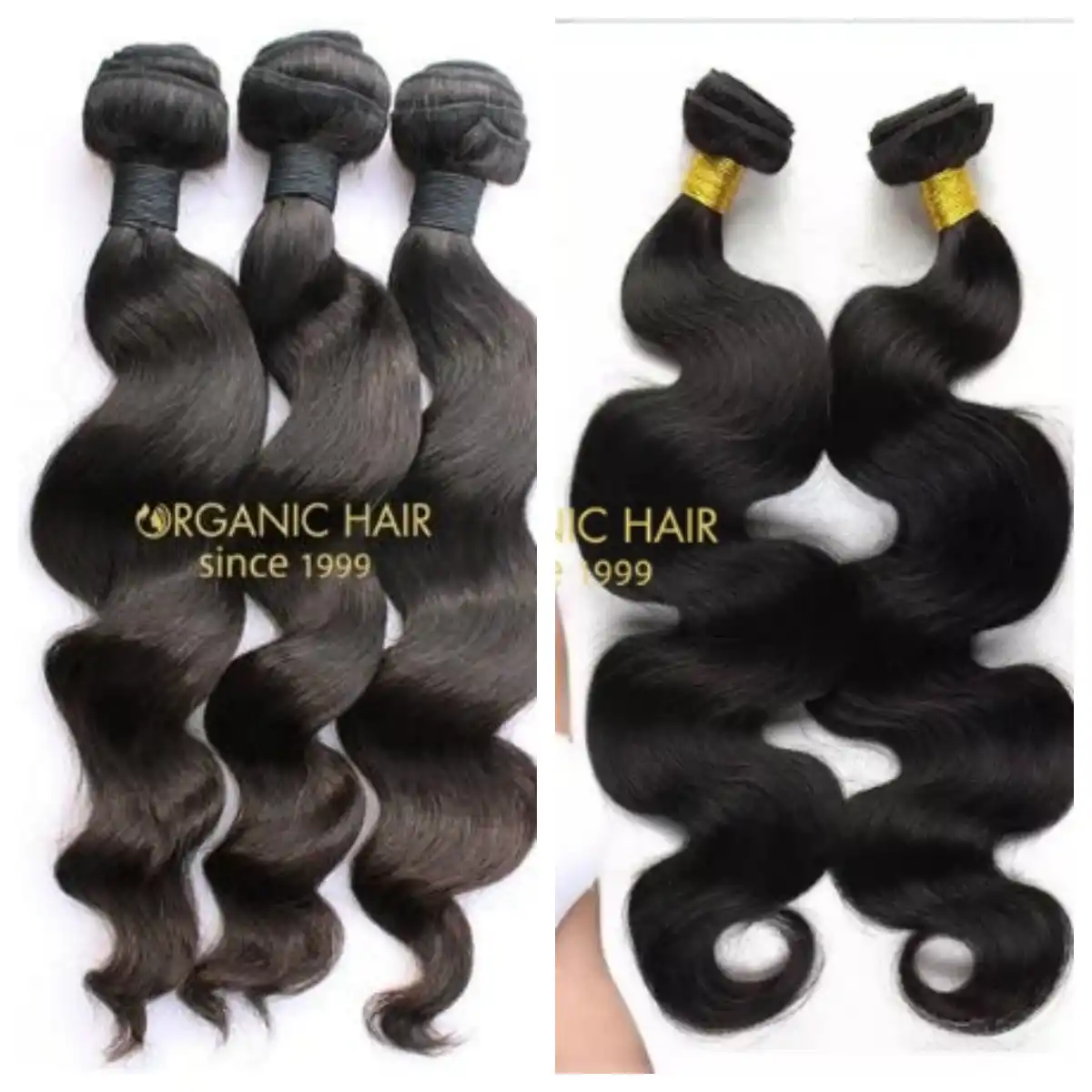
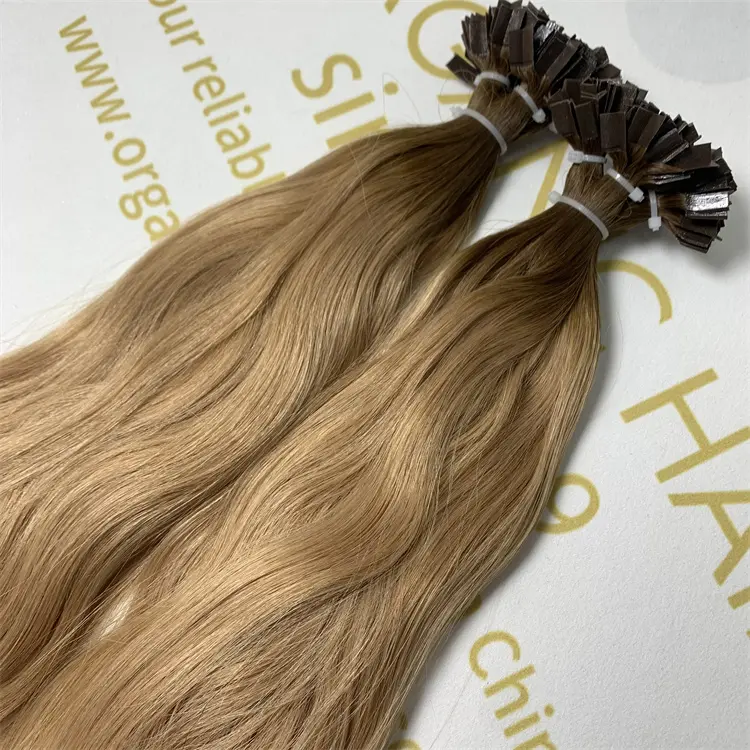
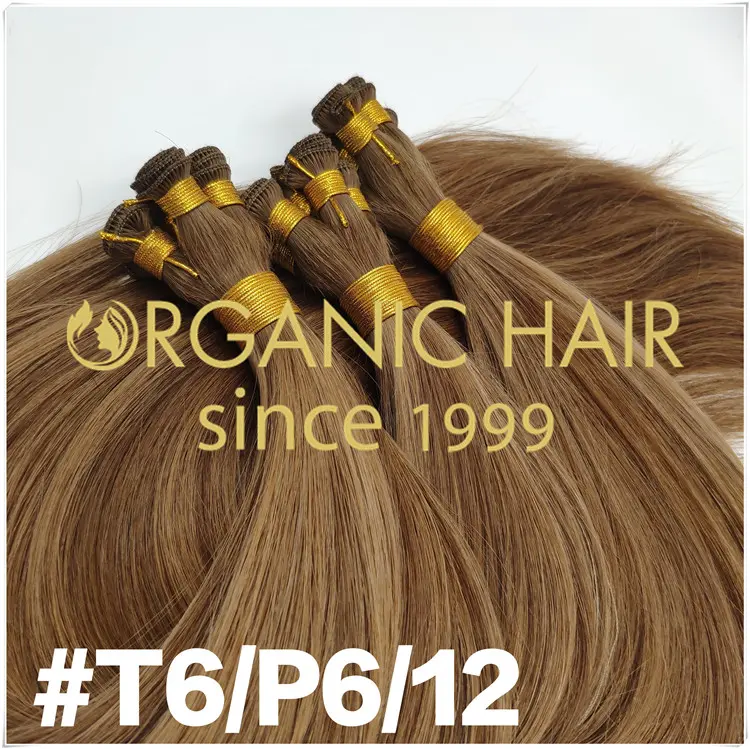
551.webp)
